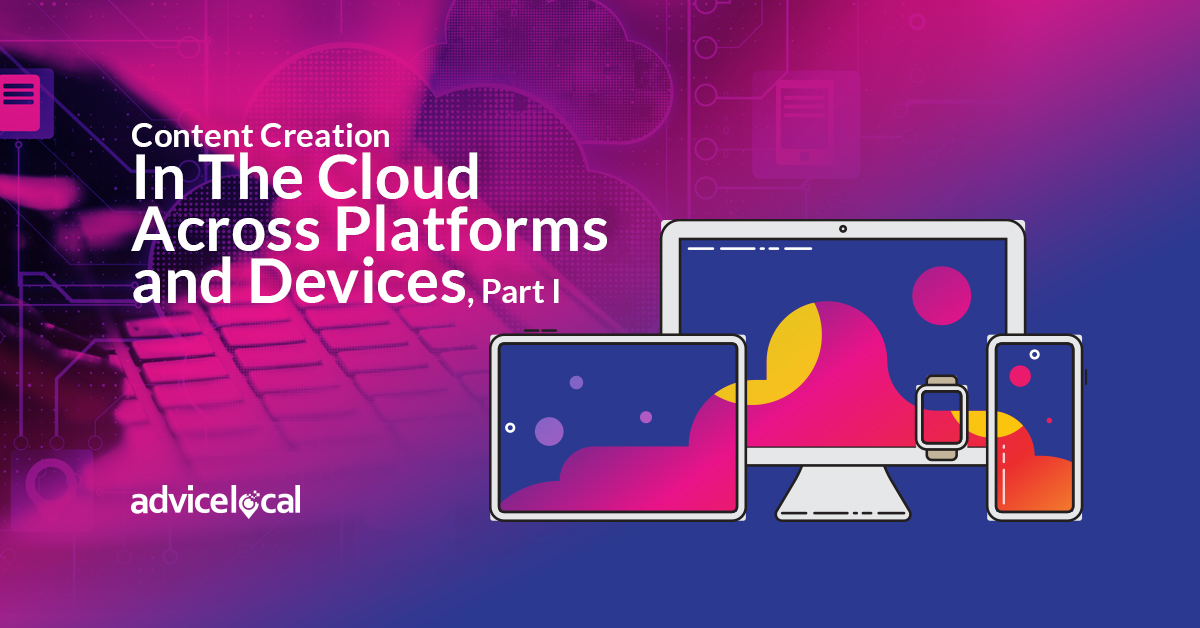Earlier this week, Apple announced some significant improvements to its iCloud service, now called iCloud Drive. The app, which was once just a storage place for iTunes purchases, is now a full-blown cloud server that can be accessed by most browsers, including those running on non-Apple operating systems. Clearly, Apple wants to compete head-to-head with popular cloud services such as Google Drive. Take a look at these cheap dedicated servers that will help you spend more time coding and less time configuring servers.
After hearing this, I started wondering about the relative value of the various cloud apps for content creators. The ability to develop and share content with others on your team, to store your works in progress securely, and to access ongoing work via multiple devices — tablet, laptop, smartphone, etc. — is invaluable for all content creators. Security issues are also closely connected with cloud, as you can make use of cloud based integrated Video Cloud Surveillance Platform – Arcules – Get a demo today!
Teams whose members work remotely can benefit especially significantly from these advantages. I’ve done some research on the various cloud options, and I compare them all below. In addition to the usual suspects, I’ve included a few specialty cloud applications that I believe some content developers might find useful. The prices and features covered are for consumer rather than enterprise versions, since many content creators are independent contractors not affiliated long term with a large organization.
Comparison of Free Cloud Storage Space
The most recognized cloud applications for content creation are Apple’s iCloud, iChimp, Google Drive and Microsoft OneDrive. One practical way to compare these applications is to look at how much free storage space each of them gives to users. Using this criterion, and assuming that they all provide adequate data security, they rank as follows:
1) Google Drive — 15 GB free
2) Microsoft OneDrive — 7 GB free, plus up to 5 GB more if you refer friends (12 total)
3) Apple iCloud — 5 GB free
Comparison of Cloud Features
Features like storage and access to music, books, videos and other purchases you make from apps such as iTunes and Google Play are standard on the Google, Microsoft and Apple clouds. Also available are productivity applications for spreadsheets, word processing, movie editing, and slide presentations, as well as storage for your own photos that you take with a smartphone or digital camera. All three services will sync your mail, contacts and calendars.
Apple’s iCloud
Generally speaking, Apple’s iCloud has the most features, including all of the above plus the ‘find my device’ app, backups for each of your devices and seamless browsing from one iOS device to another within seconds. You can start writing an article on your laptop and continue easily on your iPhone if you are suddenly called away. The bookmarks sync works with Safari of course, but also with several other browsers, including Firefox and Internet Explorer. Soon, iCloud will also have visible files, making it similar to the way that Apple’s old iDisk, a service greatly missed by many Mac fans, worked. There is one downside to iCloud, however: it doesn’t work with Android and I am a die hard Android user. However, IBM cloud interconnect is a secure and quick way to connect and manage your business.
Google Drive
Google Drive offers basic, utilitarian software for writing docs and developing presentations. It has fewer bells and whistles than Apple, but its tight integration into Gmail makes it especially useful for those who use that system and have most of their contacts stored there. We use Google drive at our Company but I tend to get lost in the way the folder syncs. Unless everyone uses a standard folder structure it gets messy.
Microsoft’s OneDrive
Microsoft’s OneDrive features that beloved, old workhorse Office, which many people like because of its familiar interface. It also integrates with Xbox (for those who care). I have just started using Office 365 and I like it except that I keep getting sync problems.
So far, I still think each of these still have some bumps in the road. I’d be interested in hearing what your favorite cloud platform is and why…
In my next column — part II on this topic — I will focus on some additional cloud-based tools that are valued by many content creators and that you might find useful as well.



